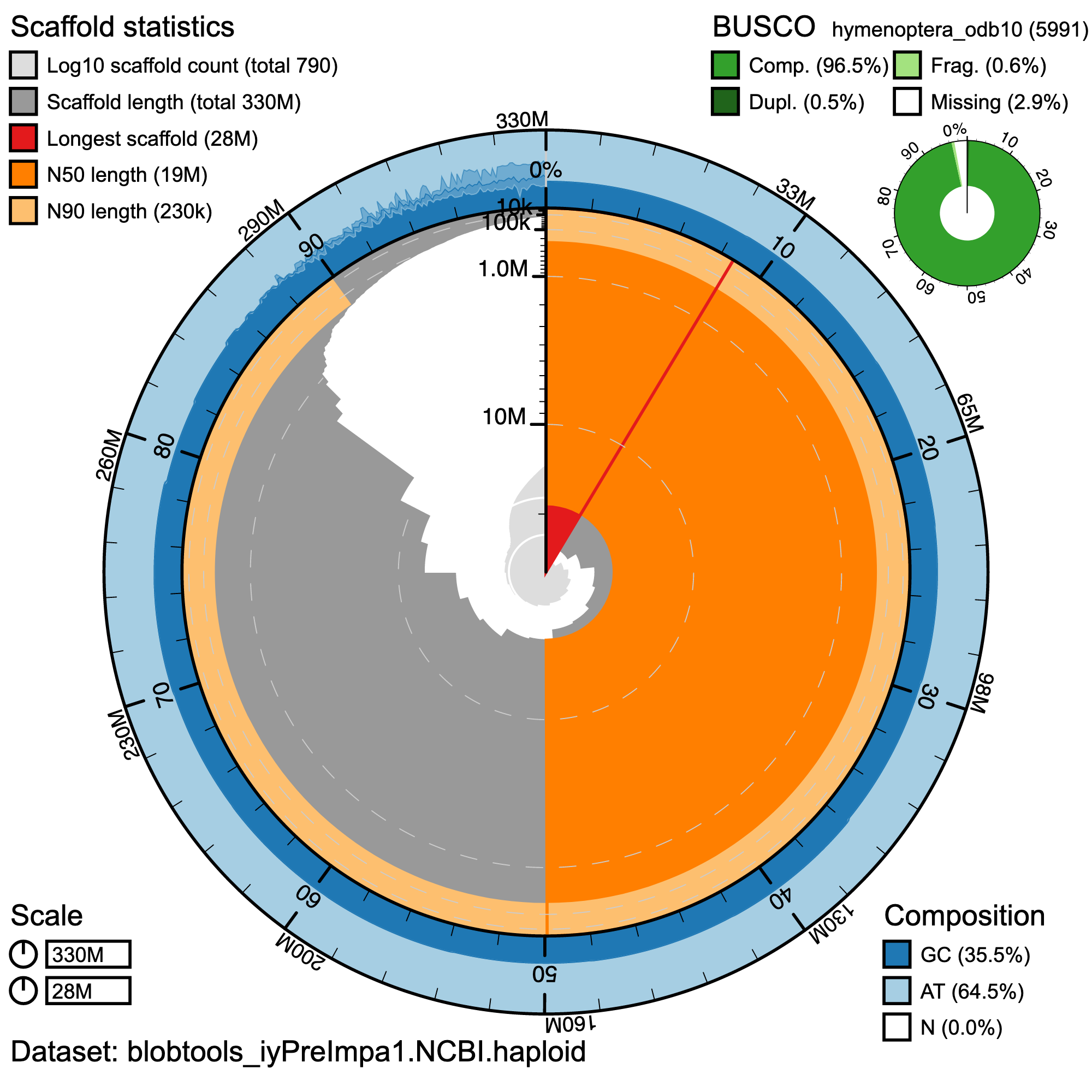Prenolepis imparis (Winter Ant)
Visual overview of genome assembly metrics
K-mer spectrum output generated from PacBio HiFi data without adapters using GenomeScope 2.0. The observed unimodal pattern corresponds to a haploid genome.
BlobToolKit Snail plot showing a graphical representation of the quality metrics for the P. imparis assembly (iyPreImpa1) and BUSCO assessment results based on the Hymenoptera set of orthologous genes (n = 5,991). The plot circle represents the full size of the assembly. From the inside to the outside, the central plot covers length-related metrics. The red line represents the size of the longest scaffold; all other scaffolds are arranged in size order moving clockwise around the plot and drawn in gray starting from the outside of the central plot. Dark and light orange arcs show the scaffold N50 and scaffold N90 values, respectively. The central light gray spiral shows the cumulative scaffold count with a white line at each order of magnitude. White regions in this area reflect the proportion of Ns in the assembly. The dark versus light blue area around it shows mean, maximum, and minimum GC vs. AT content at 0.1% intervals.
Omni-C contact map for the scaffold-level genome assembly generated with PretextSnapshot. The Omni-C contact map translates the proximity of genomic regions in 3D space to contiguous linear organization. Each cell in the contact map corresponds to sequencing data supporting the linkage (or join) between 2 such regions. Scaffolds are separated by black lines, with higher density corresponding to higher levels of fragmentation.
Authors
Elizabeth I Cash, Philip S Ward, Merly Escalona, Ruta Sahasrabudhe, Courtney Miller, Erin Toffelmier, Colin Fairbairn, William Seligmann, H Bradley Shaffer, Neil D Tsutsui


